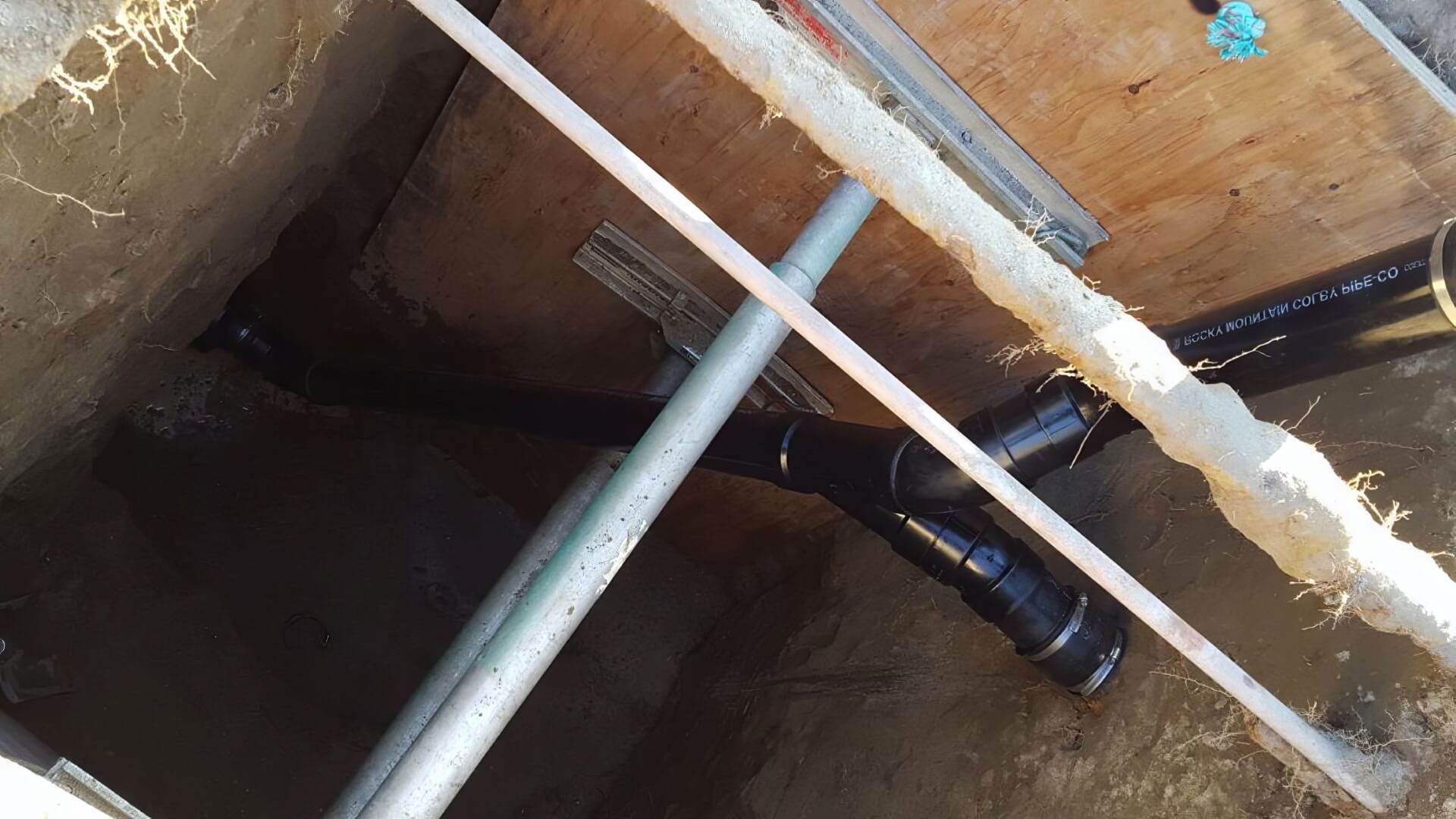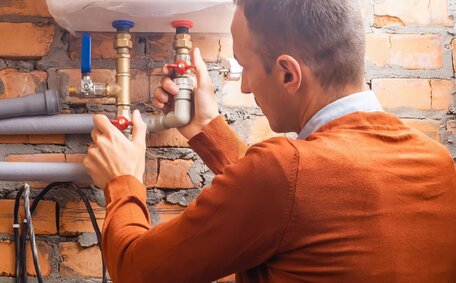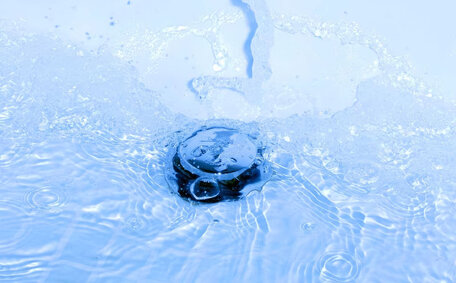Introduction to Pipe Relining
Pipe relining is an innovative, trenchless repair technique that restores damaged pipes. It involves inserting an epoxy resin liner which forms a new pipe inside the existing one, without requiring extensive digging, thus offering a less invasive alternative to traditional methods. This advanced method can ensure a significant structural improvement by sealing all fissures and embedding a resilient pipe within the old damaged precursor.
Ryde Plumbing stands out as the premier plumbing services provider, with our comprehensive services, specialising in state-of-the-art pipe relining methods for properties peppered across Ryde, Sydney. Leveraging over a decade of expertise, we offer customised relining solutions to repair damaged sewer lines, addressing your specific requirements. We efficiently manage all types pipes fitted on your property, ensuring your drains remain clear and fully functional.
The primary advantage of pipe relining service we offer is to conserve homeowners’ time, money, and peace of mind without the need for excavation. Our efficient process avoids excavation, ensuring a cleaner site and reduced risk of property damage.
The pipe relining project is typically completed within a single day, reflecting our skilled and efficient practice.
If you suspect a plumbing problem with your system and wonder, 'Does pipe relining work?', call us at Ryde Plumbing on 1300 349 338. We can inspect and provide an obligation-free quote, advising whether pipe relining is suitable for property owners’ situations.
Overview of the Pipe Relining Process
The pipe relining procedure consists of several pivotal steps:
- Initial CCTV pipe inspection - A high-definition camera is inserted into your pipes to identify the exact location and severity of cracks, holes, or root intrusions.
- Pipe cleaning - We thoroughly clean out the pipes to prepare for the epoxy resin liner. Any debris or roots are removed at this point.
- Resin liner installation - A resin-saturated felt liner is cleverly manoeuvred into damaged pipes, snugly fitting the internal contours to create an effective new pipe within the compromised areas. The resin then cures, which creates a new pipe seamlessly integrated within the existing structure.
- Final CCTV review - We reinspect the pipe using cameras to ensure the liner has cured correctly with no defects. This also shows the restored condition of your pipes.
Compared to conventional methods, pipe relining is a notably more efficient solution for your home’s pipe and drainage network. Our specialised teams and cutting-edge equipment handle a range of plumbing issues, completing relining projects within a single day, avoiding excavation and structural disturbance.
We customise our premium pipe relining solutions to meet your specific needs following comprehensive inspections. Whether dealing with a burst pipe, cracked, corroded, or tree root infested pipes, we can do wonders by providing effective pipe repair that will restore flow and stop leaks.
Inspection and Preparation
The first step when it comes to pipe relining is a thorough inspection of your pipes. At Ryde Plumbing, we use state-of-the-art CCTV cameras to get a detailed look inside your pipes and accurately assess any damage to the pipes your plumbing system may have.
Our expert technicians come out to pinpoint the exact locations of cracks, holes, root ingress or other issues in your damaged drain, managing repairs of these pipes without the need for any disruptive techniques. We ensure the pipes possess the structural integrity required for the relining process.
Once we have confirmed pipe relining is suitable, we move on to pipe preparation. This involves comprehensively cleaning out the pipes in readiness for the epoxy resin liner. High pressure water jets make sure to remove any built up debris, sludge or invading tree roots within the pipes.
By ensuring thorough cleaning and preparation, we create optimum conditions for long-lasting pipe repairs. By removing contaminants, the resin liner can fully bond to the inner walls of your pipes. This ensures maximum structural integrity and leak proofing, which can provide peace of mind for decades to come.
With nearly 15 years of dedicated service in the Ryde area, we master inspection and preparation techniques ensuring the finest relining results without need excavation. As a trusted plumbing company, we leverage the latest technologies and methods to deliver reliable, quality outcomes with every pipe relining project.
Installing the Epoxy Liner
The key to a successful pipe relining project is proper installation of the epoxy resin liner. At Ryde Plumbing, our technicians are highly skilled in sealing pipes efficiently without the need for excavation during liner insertion and curing.
By mastering inversion lining and pull-in-place lining methods, we’ve honed our skill in effective pipe repair. Using air pressure, we revert the liner which is then inserted into the damaged pipe interior.
Inversion lining involves turning the resin-soaked felt liner inside out as it is fed into the damaged pipe.
Both methods can skilfully guide the flexible liner around bends and curves, transforming the performance of your plumbing system. For blocked drains, the liner firmly adheres to the damaged pipe’s interior walls, effectively mending the issue and strengthening the plumbing system’s integrity, ensuring no leaks.
Our extensive experience with relining means we know what you need to adeptly manage any configuration of pipes that have emerged on the market in recent years. Our relining services are expertly delivered regardless if the pipes run under floors, nestle behind walls, or snake beneath your property - our team’s practical knowledge can help ensure the liner’s perfect insertion and cure for enduring results.
Curing the Epoxy Liner
Once the epoxy resin liner is installed, it goes through a curing process to harden and create a new pipe within old existing structures. Various factors such as resin type and temperature can influence pipe relining cure times, which typically range from 2-4 hours.
Our use of rapid-cure vinyl ester resins can shorten the curing time to as little as 30-90 minutes, thereby speeding up the entire procedure. This capacity demonstrates how we managed a good job with the relining, concluding the project within just a single day, free of delays. Slower curing resins may require returning the next day to finish off installations.
Monitoring temperature is critical for understanding how long does pipe relining take during the curing process, ensuring robust, seamless, and leak-proof pipe relining outcomes.
In a case of winter plumbing conditions, In cold conditions, such as within hot water systems, the resin takes longer to harden. We may apply hot water or steam to maintain the optimal 15-25°C required for curing.
Our Cured-in-Place Pipe (CIPP) relining technology is highly recommended, as it enables restoration from within, with minimal surface disruption. The rigid liner adapts to pipes of every configuration, including the specific pipe which it encases, navigating contours, fractures, and voids to form a seamless, jointless surface that integrates seamlessly within your damaged sewer pipe, all completed without disruptive techniques.
Factors Affecting Project Timeline
Pipe Material
The composition of pipe material can significantly affect the timeline for pipe relining projects. Plastic, concrete, and clay pipes are usually relined more quickly than cast iron or galvanised steel pipes because of their distinct preparation and curing needs.
Pipe Size
Larger diameter pipes generally take longer to reline compared to smaller pipes. More resin and liner material is needed for wider pipes. And greater pipe surface areas increase preparation, installation and curing durations.
If there is extensive corrosion, cracks or holes in your pipes, additional work will be needed for removing replacing damaged sections before relining. We may also opt for a thicker resin liner to provide added structural reinforcement. Both factors can lengthen the project, especially when dealing with damaged sewer pipes.
Easy access speeds up key installation processes. We’ll advise if delays are possible, but we only can proceed once we ascertain all conditions are met for successful relining.
Pipe Material and Size
The composition of pipe material significantly influences the timeline made up of both preparation and the curing phases. Plastic pipes like PVC require less intensive surface preparation compared to materials like cast iron or galvanised steel. Curing resin liners in plastic pipes also takes less time.
Cast iron, clay and concrete pipes undergo more comprehensive cleaning and preparation to allow the liner resin to bond effectively. And the curing process takes longer to properly harden inside these pipe compositions.
Larger 300mm or 400mm diameter pipes need more resin material to reline compared to 100mm or 150mm pipes. More liner must also be inserted and inflated for wider pipes. This increases preparation, installation and curing durations.
Conversely, 50mm and 65mm narrow drain pipes have less surface area so require less liner material. Smaller pipes allow faster and easier access too. However, multiple access points may be needed for longer small pipe runs.
Extent of Damage
The extent of existing pipe damage significantly influences how long the relining project will take from start to finish.
If pipes minor damage like small cracks or mild corrosion are present, less preparation work is needed before we can install the liner. Cleaning to the full extent of the damage requires more equipment time and labour.
We may also need to use a thicker and stronger resin liner for badly damaged pipes to provide sufficient structural reinforcement. Installing these liners requires less labour intensive preparation, insertion, and curing stages.
Conversely, pipes with only minor wear and tear can be lined much faster. If damage is limited to small cracks and holes, standard resin liners are quick to insert and cure. Less preparation like CCTV inspections and jet cleaning is needed too.
As the premier provider of pipe relining services in Sydney, Ryde Plumbing customises each project to the unique damage at hand. We’ll provide accurate quotes considering the timeline pipe relining requires compared to traditional methods before commencing any work.
Accessibility
The accessibility and location of pipes slated for relining significantly mould the timeline for each piping project. Ease of access accelerates the process, while difficult access can lead to delays.
Underground Pipe Access
For underground drain pipes, access is heavily dependent on their location. Pipes under driveways or landscaped areas require more excavation to access. The requirement for such work adds time and effort to the project, whether it’s a residential home or a commercial property.
Pipes located under open ground can be accessed without the need for excavation, allowing for much faster progress. Our equipment and liners can access these pipes unimpeded, streamlining the process.
Internal Pipe Access
Gaining access to pipes inside the walls or floors, such as in your bathroom, adds complexity. Working around existing fixtures and structures often hinders efficiency. Areas with limited manoeuvrability due to space constraints can also slow key installation steps.
However, easily accessible pipes in large underfloor areas or open utility spaces speed up the process, granting our equipment and liners clear room to work, essential insights into what need for expedited relining.
During our initial inspection, we assess everything when comes to pipe accessibility concerns and will notify you should there be any anticipated delays needing excavation. We schedule projects accordingly to deliver efficient results.
Comparing Relining and Replacement Timelines
When it comes to repairing damaged pipes, pipe relining offers a much faster and less disruptive timeline compared to full pipe replacement.
Pipe relining is typically completed more quickly than replacement, usually within 1-2 days.
After a detailed CCTV inspection and preparatory work on the first day, our experienced team swiftly installs the epoxy liner into the existing pipes on the following day. This trenchless technique avoids tearing up driveways, jackhammering floors, or disrupting gardens, thus preserving your property and saving time and expense.
In contrast, traditional pipe replacement is a prolonged process that involves the need for extensive excavation works, often failing to preserve time or landscape aesthetics. Traditional pipe replacement, involving trench-digging and pipe laying, can take 1-2 weeks, disrupting your landscape and potentially affecting your home or business. The traditional process can be more expensive and incurs significant upheaval that you’d rather avoid, leading to loss of access, dust, noise, and debris.
The average project costs are less than what you’d generally expect to enhance your home’s infrastructure than that of full pipe replacement.
When it comes to pipe relining experience in Ryde, Sydney, our team at Ryde Plumbing has over a decade’s worth, enabling us to provide accurate quotes outlining project durations. We schedule work efficiently to deliver quality relining results in timely fashion with minimum fuss and disruption.
For an expert take on reliable pipe repairs, call us without breaking the bank, call us and chat with our approachable team today on 1300 349 338.
When to Choose Relining
Trenchless pipe relining is the ideal solution for pipes with minor to moderate damage that retain their structural integrity. Cracks, holes, joint misalignments and small root intrusions, which can cause significant damage, are all easily repaired through epoxy resin liners.
Relining prevention addresses one of the most common plumbing challenges by returning pipes to a smooth, sealed state, aiding in maintaining an effective plumbing maintenance system. it prolongs the life of your pipes, maintaining system functionality far beyond what traditional replacement offers.
Replacement may become necessary for pipes that are severely corroded or have completely collapsed. In the majority of cases, relining is a dependable method for quick pipe restoration with minimal impact on property.
We assure you that relining upholds the integrity of walls, floors, and landscaping, what need know for a guaranteed durable resolution. We would highly recommend it as the best pipe solution for the continued preservation of your home or building’s hidden infrastructure.
Contact Ryde Plumbing on 1300 349 338 For professional evaluations and advice to help you choose pipe relining options.
Conclusion
Pipe relining is an efficient, minimally invasive alternative for pipe restoration that does not require the disposal of old pipes, unlike traditional pipe replacement methods. Our team did a great job, upholding exacting standards and meticulous attention, assuring you’re well-informed about the complete trenchless repair process which typically spans just 1-2 days with minimal property disruption.
As Sydney’s premier pipe relining specialists with over 15 years of expertise, Ryde Plumbing has a proven track record of excellence.
For professional assessments on whether pipe relining can do more than just restore your pipes, call us today on 1300 349 338 or email [email protected].






